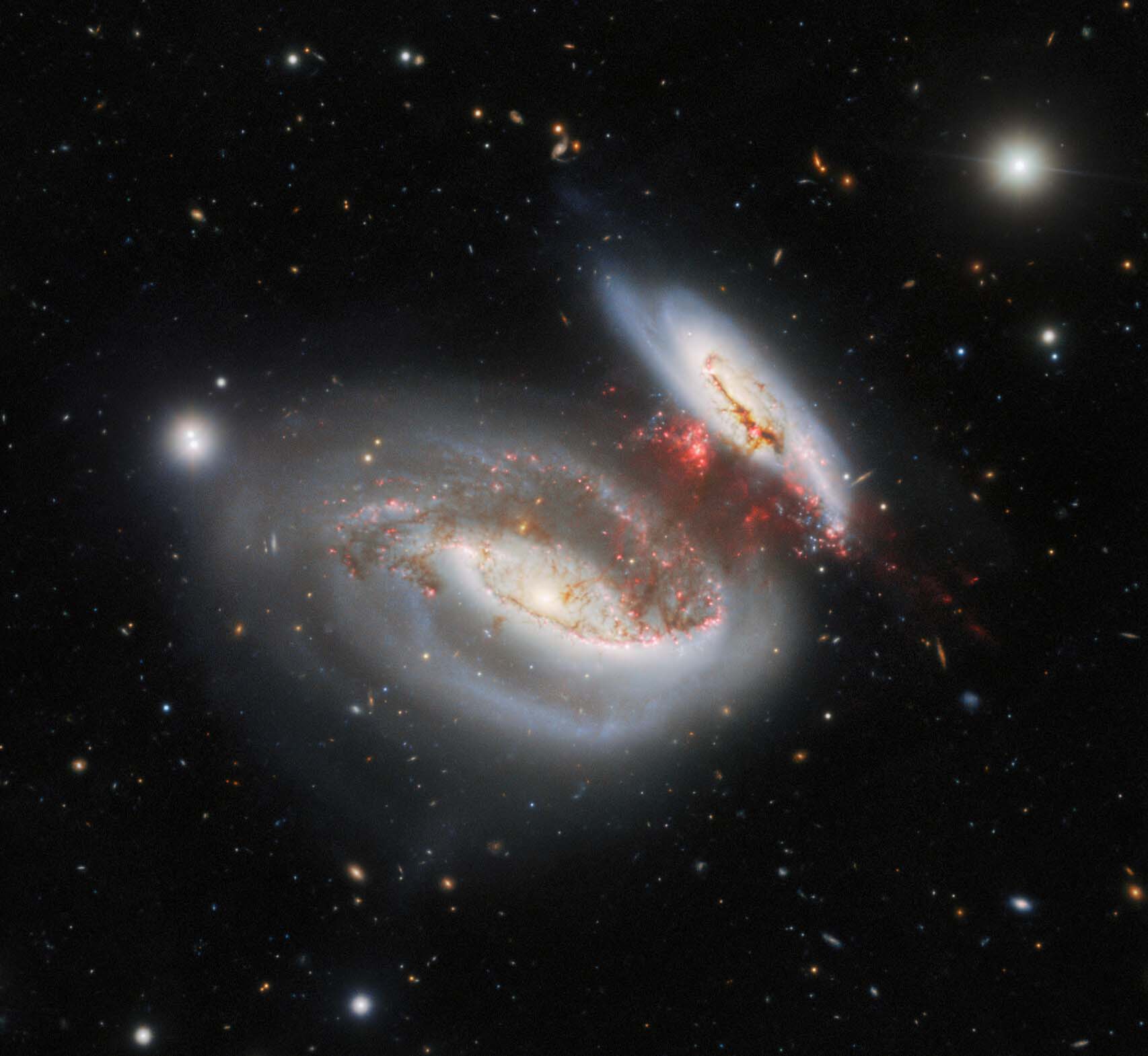NOIRLab: ‘Taffy Galaxies’ Collide, Leave Behind Bridge of Star-Forming Material

The Gemini North telescope, one half of the International Gemini Observatory, operated by NSF’s NOIRLab, captured this dazzling image of UGC 12914 and UGC 12915, which are nicknamed the Taffy Galaxies. Their twisted shape is the result of a head-on collision that occurred about 25 million years prior to their appearance in this image. A bridge of highly turbulent gas devoid of significant star formation spans the gap between the two galaxies.
Galaxy collisions are transformative events, largely responsible for driving the evolution of the Universe. The mixing and mingling of stellar material is an incredibly dynamic process that can lead to the formation of molecular clouds populated with newly forming stars. But, a head-on collision between the two galaxies UGC 12914 (left) and UGC 12915 (right) 25–30 million years ago appears to have resulted in a different kind of structure — a bridge of highly turbulent material spanning the two galaxies. Though this intergalactic bridge is teeming with star-forming material, its turbulent nature is suppressing star formation.
This pair of galaxies, nicknamed the Taffy Galaxies, is located about 180 million light-years away in the direction of the constellation Pegasus.
This new image, captured with Gemini North [1], one half of the International Gemini Observatory, operated by NSF’s NOIRLab, showcases the fascinating feature that gave them their name. A tenuous bridge composed of narrow molecular filaments, shown in brown, and clumps of hydrogen gas, shown in red, can be seen between the two galaxies. Its complex web structure resembles taffy being stretched as the pair slowly separates.
